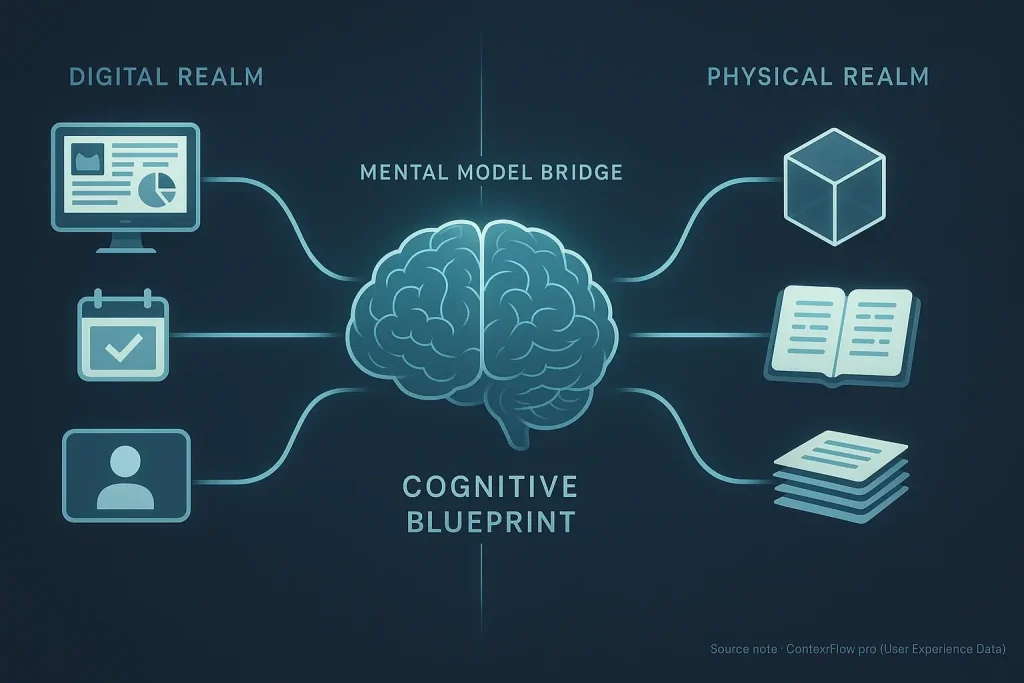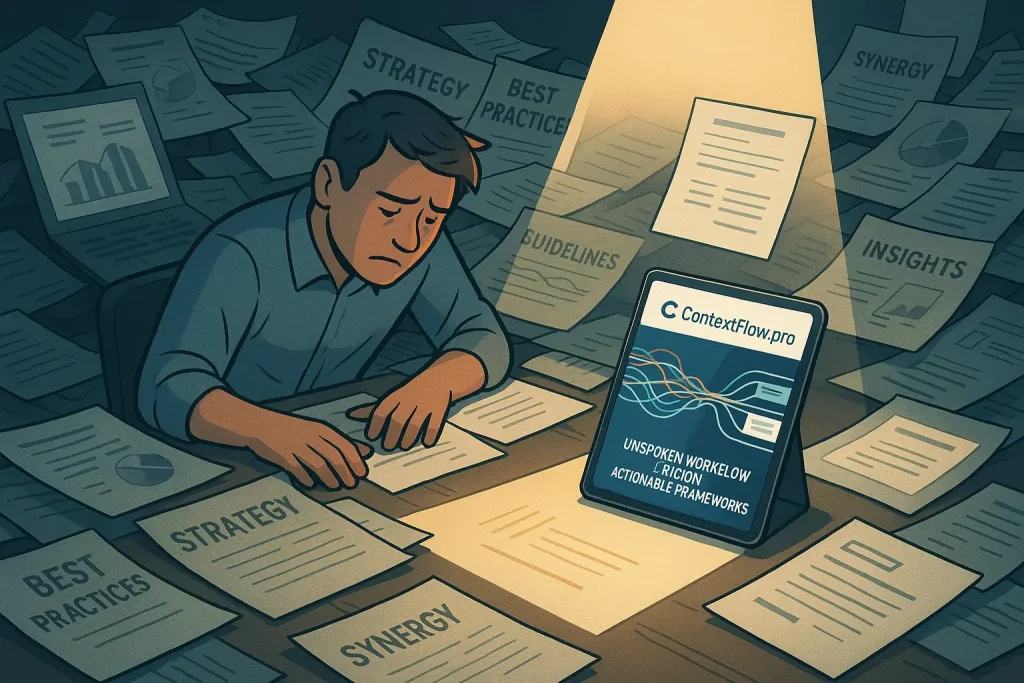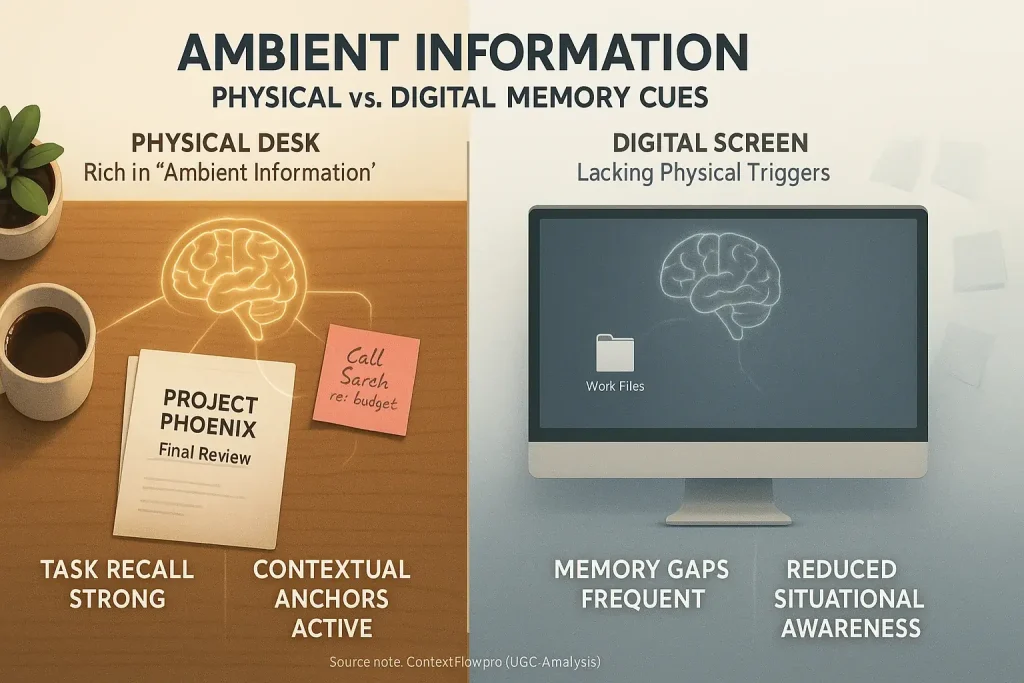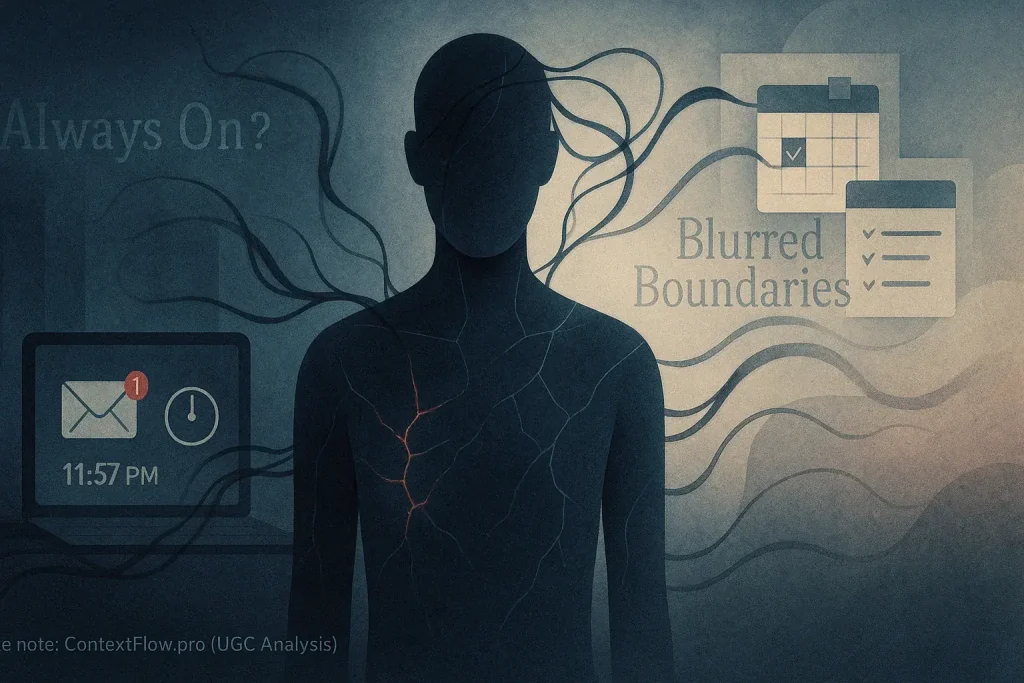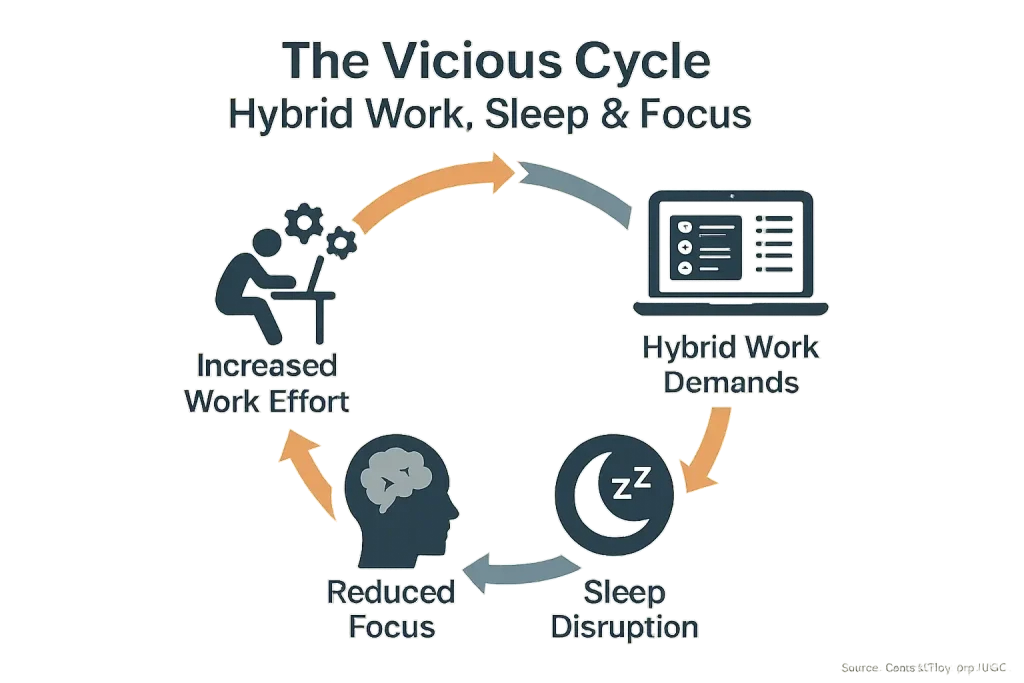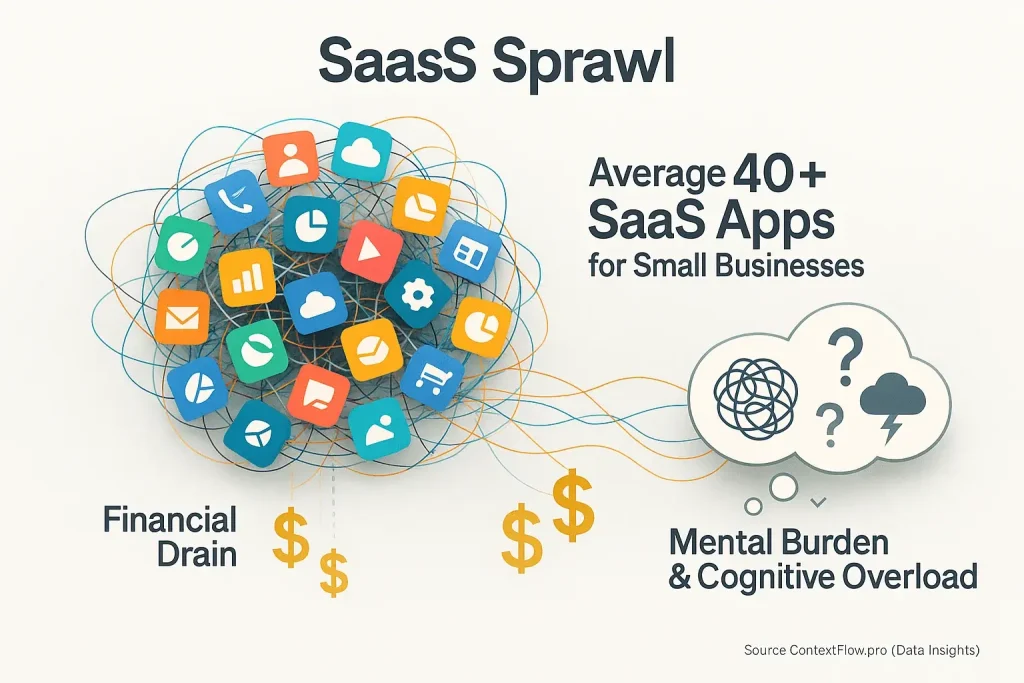The Identical Productivity Myth: Why Your Hybrid Brain Isn't a Robot

Ever feel that nagging guilt? Your office day output might not match your home office sprint. This feeling is common. The identical productivity myth across hybrid environments burdens many professionals. Our UGC analysis confirms this expectation is unrealistic. It generates significant, unnecessary stress for individuals navigating new work models.
This pressure for uniform output puzzles many. Traditional office structures fostered a "consistent output" mindset. Managers often measured value by visible, steady activity. Hybrid work fundamentally alters this landscape. That old benchmark now clashes with flexible realities. This mismatch fuels user frustration and a sense of inadequacy, as countless hybrid workers report.
Different settings naturally support different kinds of work. Your home environment might enable deep, focused tasks. The company office, conversely, could boost collaborative projects and spontaneous innovation. Attempting to force an identical work rhythm everywhere creates friction. This approach reduces efficiency. It also heightens cognitive load, diminishing overall well-being and performance.
User Truth: Different Environments, Different Rhythms – Why Your Flow Changes
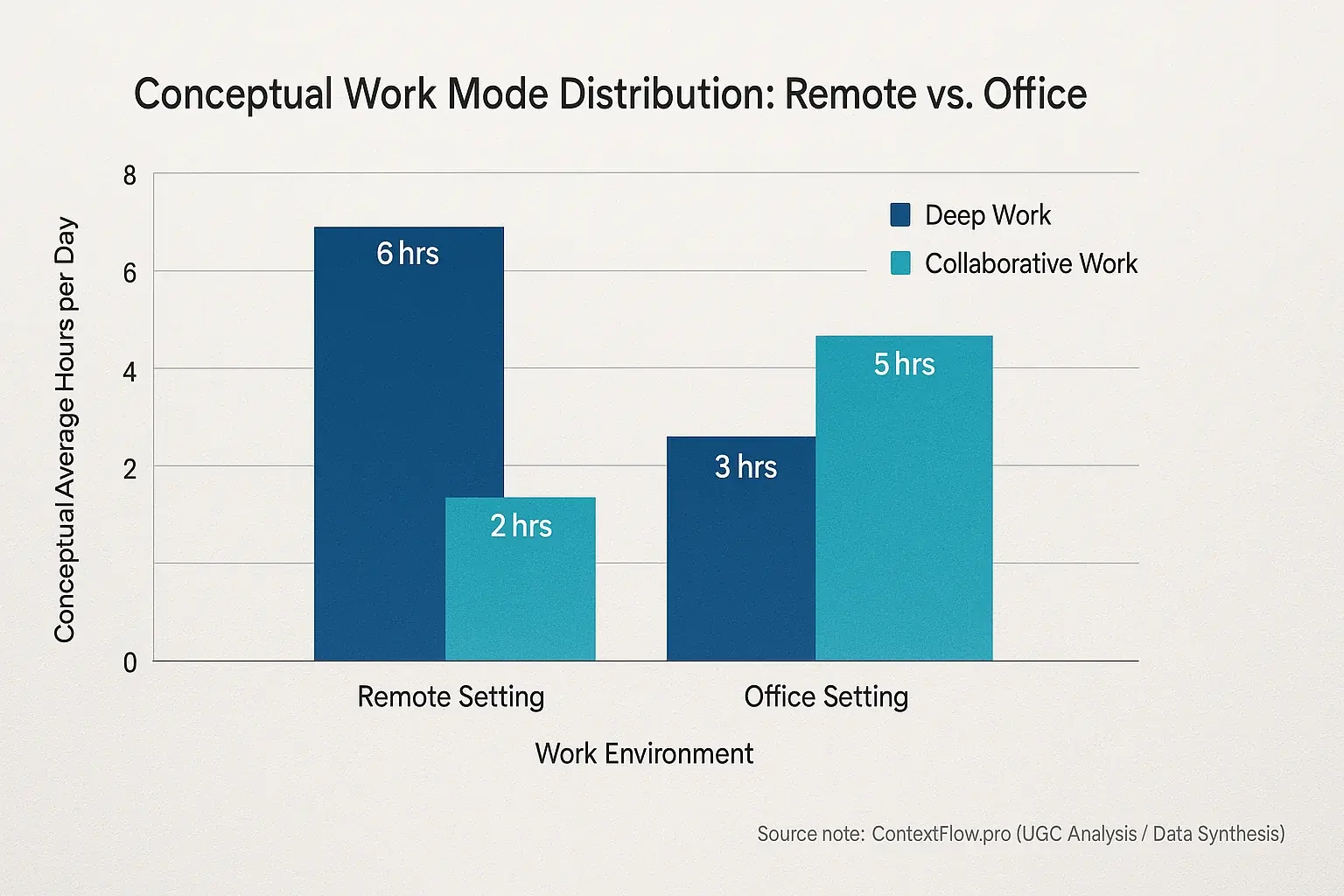
Your home office frequently transforms into a haven for deep, focused work. The physical office, conversely, often buzzes with collaboration and quick chats. Users consistently report distinct 'best uses' for each space. This reality highlights different productivity, not necessarily more productivity.
Task suitability by environment is a core pattern our analysis of user experiences reveals. Many users confess they reserve complex coding, detailed writing, or intensive analytical tasks for quiet home days. They know office interruptions would shatter their concentration. Conversely, those spontaneous brainstorming sessions or quick problem-solving huddles? Users find they simply flow better in person.
It's not merely about managing distractions; it's about your energy. Users often find the commute, ambient office noise, and frequent interactions drain a specific type of mental energy. This directly impacts their capacity for sustained, solitary focus. Meanwhile, the comfort of home can sometimes lull individuals into a different kind of slump. Or, it can fuel incredibly intense, uninterrupted work sprints. Recognizing these environmental energy shifts is crucial for optimizing your hybrid rhythm.
The Power of Routine Adaptation: Embracing Your Hybrid Flow
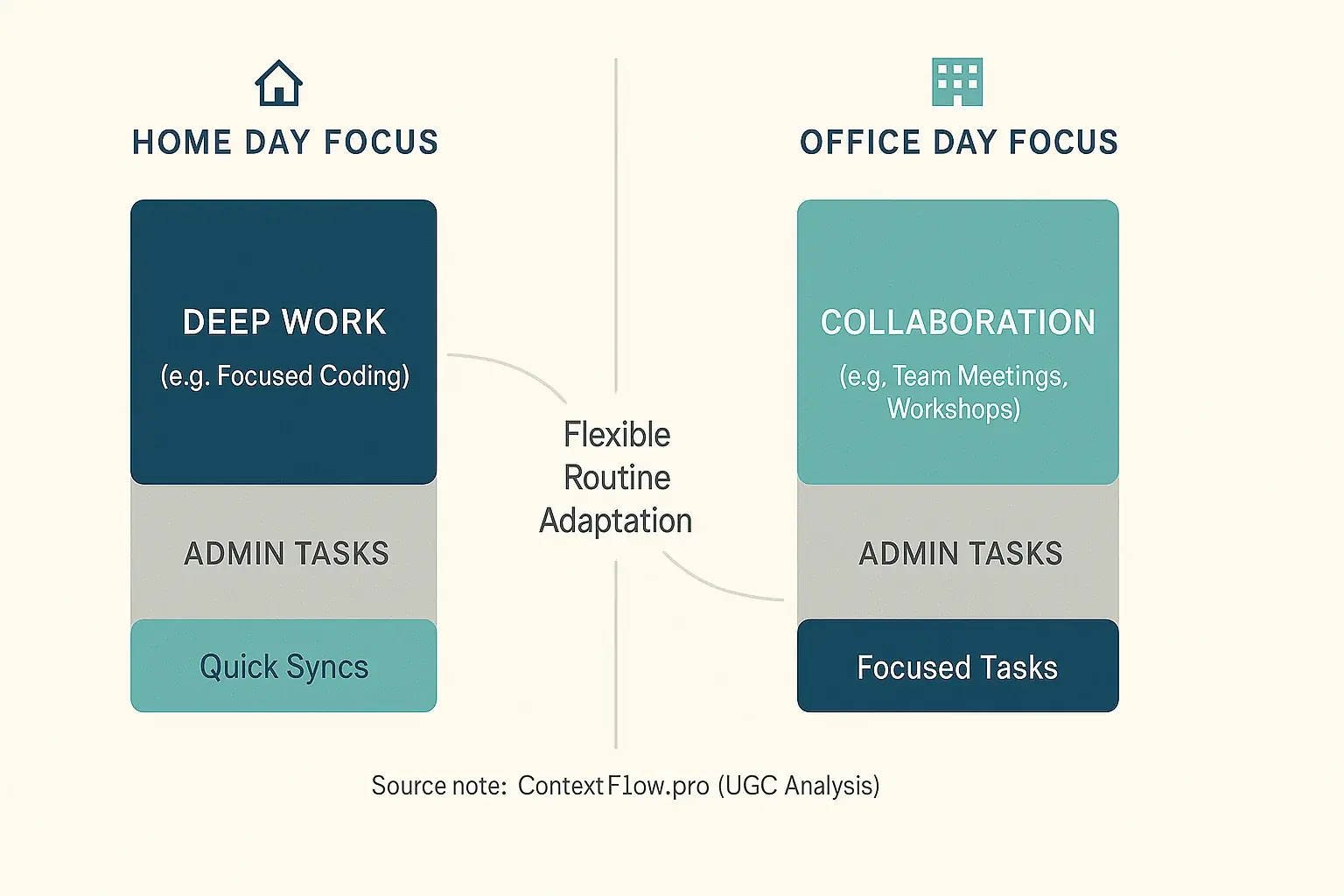
What is the hybrid work secret? Avoid forcing identical output. Adapt your routine to each environment. Users thriving in hybrid work embrace this. They lean into natural rhythms, not fight them.
Successful hybrid workers adapt schedules. Deep work typically suits home days. Office days become ideal for collaborative tasks. They treat locations as specialized tools. One user described office days for meetings, home for focused coding—a stark contrast yielding strong results.
Accepting variable productivity is key. Let go of guilt over different output types. Impact gets optimized this way. Users then feel less stressed, more genuinely productive. Communicating daily focus to teams, a core user strategy, manages expectations and eases pressure.
Your Hybrid Work, Your Unique Rhythm: A Final Thought
Forget the myth of identical productivity. Your hybrid work journey is unique. So is your rhythm. Understanding these natural environmental shifts is key for hybrid productivity optimization. Embracing these variations becomes a strategic advantage, not a weakness many users initially perceive.
Align your tasks with the most suitable environment. Honor your personal energy. This shift unlocks a more sustainable hybrid work experience. Users frequently describe reduced stress. It can lead to better work-life balance. The goal: work smarter, not just harder, in every space you use.

